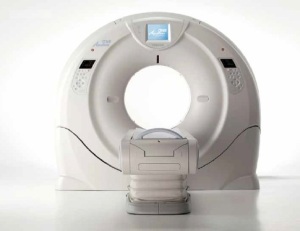by
Nancy Ryerson, Staff Writer | June 24, 2013
From the June 2013 issue of HealthCare Business News magazine
In 2009, national attention focused on radiation safety after two reports of overdosing during CT scans in California. The first involved a two and a half year old boy who was scanned for more than an hour, an incident that resulted in the radiologist’s dismissal. The second revealed that a hospital had inadvertently given up to eight times the recommended dose to 206 stroke patients over the course of 18 months.
In reaction to those accidents as well as emerging studies linking CT radiation with cancer risk, in July 2012 California passed a law requiring radiologists to record radiation dose from CT scans in patients’ reports.
Texas followed suit in March of this year with its own dose management law, one that requires health care facilities that perform CT to form a radiation protocol committee. Around 20 more states currently have dose laws in the works.



Ad Statistics
Times Displayed: 2147
Times Visited: 10 Fast-moving cardiac structures have a big impact on imaging. Fujifilm’s SCENARIA View premium performance CT brings solutions to address motion in Coronary CTA while delivering unique dose saving and workflow increasing benefits.
OEMs and software companies have rolled out a variety of updates and products to help facilities follow laws and manage dose. But just having the right tool doesn’t always make it easy for radiologists to adjust to all-new requirements. Gaps in workflow, education and resources can all keep facilities from monitoring dose effectively,
DOTmed Business News spoke with CT experts about where a facility should start when looking to better-manage dose, whether it’s investing in new equipment and software or just seeking advice from a team of pros.
The big players shrink dose
New CT scanners generally come equipped with tools and software that make adjusting and monitoring dose more intuitive. Iterative reconstruction is the most common feature major OEMs now offer that can help lower dose. The software assembles an image created with a low amount of dose, a method that’s been around since the 1970s but only recently became time efficient enough to use.
“As power increases, and it takes less time to do, I think more groups are utilizing it to see dose reduction,” says Dr. Danny Kim, assistant professor in the department of radiology and director of quality and safety at NYU Langone.
A new iterative reconstruction tool from Philips also accounts for distortion caused by large orthopedic implants. In total, studies have found that iterative reconstruction can reduce dose by up to 50 percent.
Another tool offered by the major OEMs, automatic exposure control, modulates radiation dose in real time based on how different organs absorb it. AEC can reduce dose by up to 50 percent.
Care kV, an exclusive tool offered by Siemens, automatically adjusts the X-ray tube voltage based on the part of the body being imaged, the type of study and the patient’s body type.

